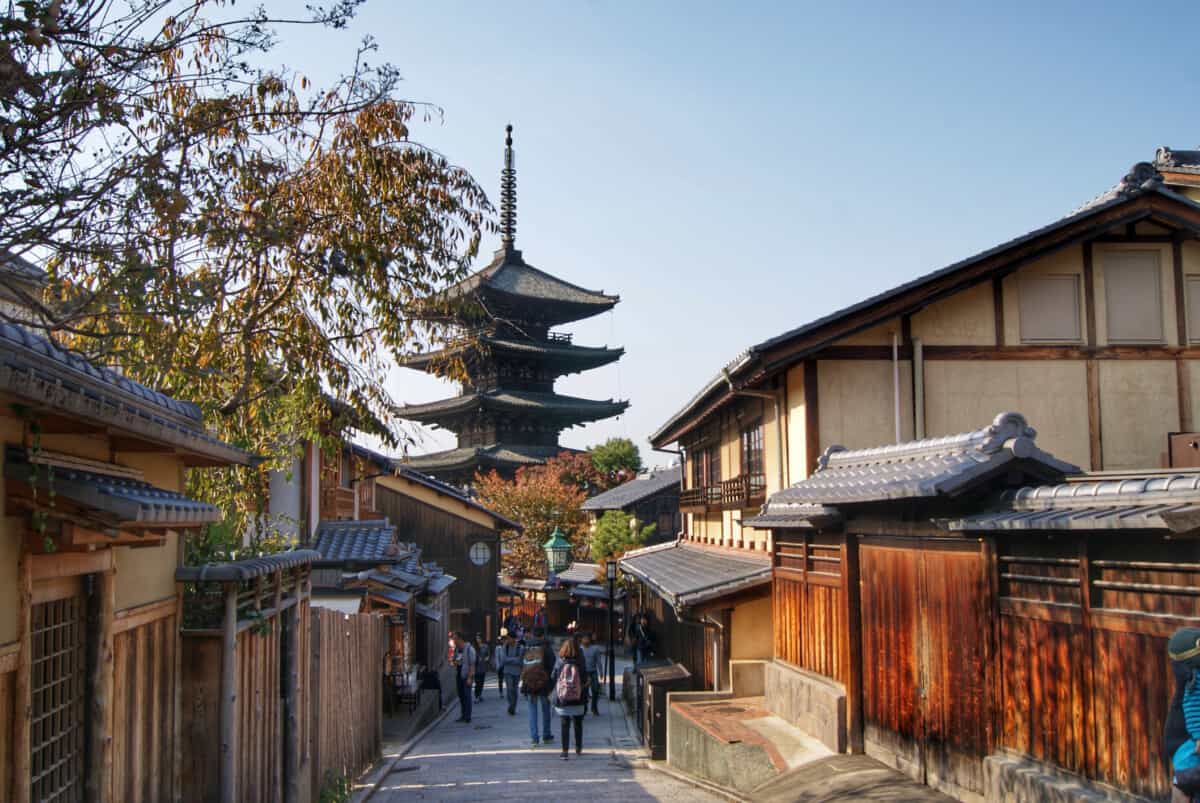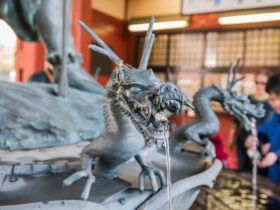The top 10 things you must not miss on your once in a lifetime trip to Tokyo have been listed below:
- Visit Ryōan-Ji’s Rock Garden
- Watch Kyoto’s Spring Dances
- Visit the Fushimi Inari-Taisha Shrine
- Visit Yokai Street to Find Traditional Japanese Ghosts
- Eat at Kichi Kichi
- Visit Tenryuji Temple
- Visit the Arashiyama Bamboo Forest
- View Geisha’s in Gion
- Visit the Yasaka Shrine
- Visit Kiyomizudera
Continue reading to discover why these tourist attractions are considered a must-see on your trip to Kyoto and why you should include them in your travel itinerary.
Visit Ryōan-Ji’s Rock Garden
One of Kyoto’s most well-known sights is the Ryōan-Ji Temple Rock Garden. In fact, the word has become associated with Japanese rock gardens worldwide. The world-famous temple and its grounds are a UNESCO World Heritage Site that should be included in every trip to Kyoto.
Since the 8th century, Japanese rock gardens, also known as Zen gardens, have served as a place to contemplate and seek the meaning of life.
Ryoan Ji Rock Garden Temple Official Website
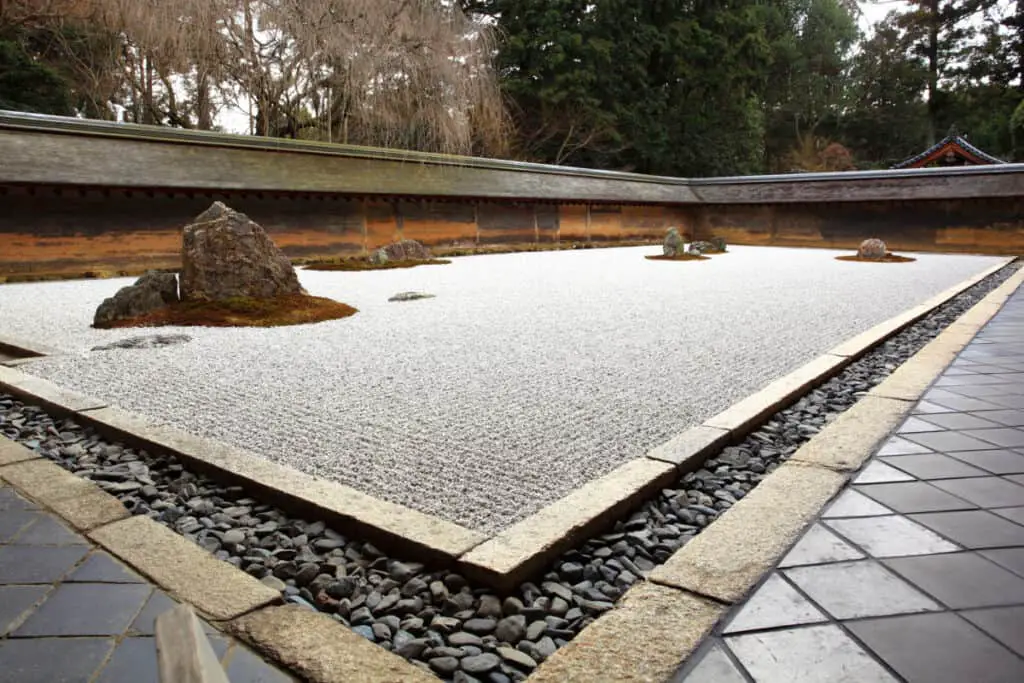
They are distinguished by their raked gravel or sand, representing water ripples, and significant thought goes into selecting rocks and their placement.
Ryōan-Ji is one of Kyoto’s most well-known Zen Buddhist gardens. It consists of 15 stones arranged in such a way that only 14 of them can be seen at any given moment when standing on the veranda.
Watch Kyoto’s Spring Dances
Kyoto’s geiko, or traditional dancer, are clustered in five geisha districts across the city. Once a year, each of the districts puts on a large-scale dance for the public, with four of them taking place during the spring season.
You will need to be in Japan in either March, April, or May to catch a glimpse of a geisha Spring dance. Every kagai is unique, with differences in the number of performers, the dance repertoire, the number of performances, and the ticket price, ensuring that you will find a dance that piques your interest.
Geisha Dances In Kyoto Via Discover Kyoto
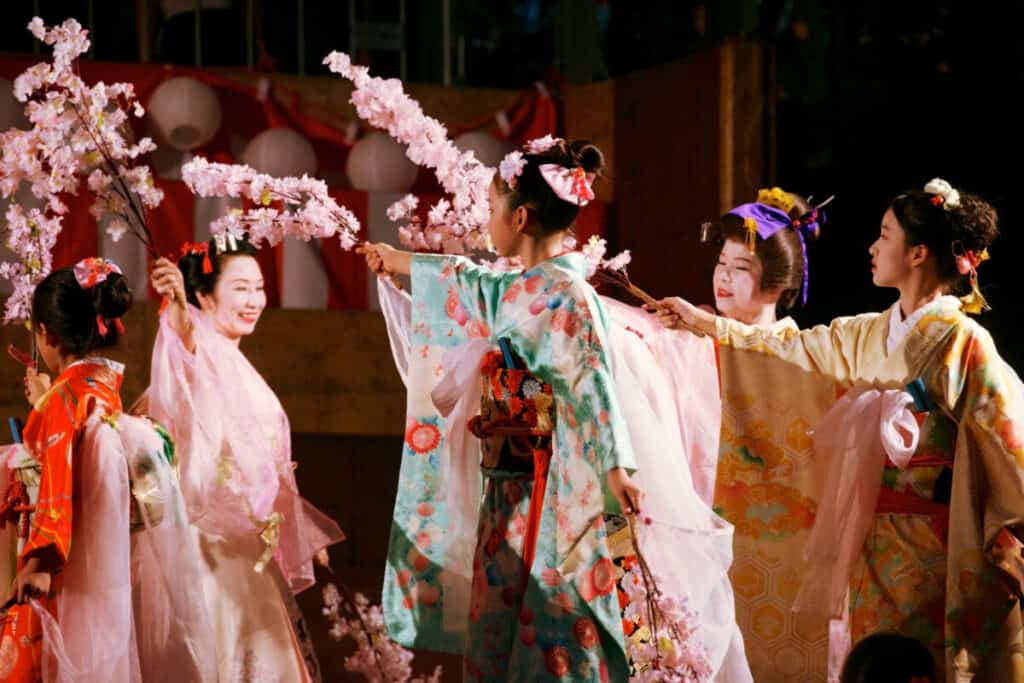
Those interested can upgrade their ticket to include a tea ceremony before the dance, which a maiko apprentice will host.
Tickets can be purchased at the theatre ticket offices on the day of the performance if they are not sold out or reserved in advance at Kyoto Station’s Tourist Information Center.
Visit the Fushimi Inari-Taisha Shrine
Fushimi Inari Temple is a significant Shinto temple located in Kyoto’s southern region. It is well-known for its thousands of vermilion torii gates that span a network of passageways behind the main structures.
The roads lead to the sacred Mount Inari’s woodland forest, which is part of the shrine grounds and is at 764 feet evevation.
Fushimi Inari Taisha Shrine Official Website
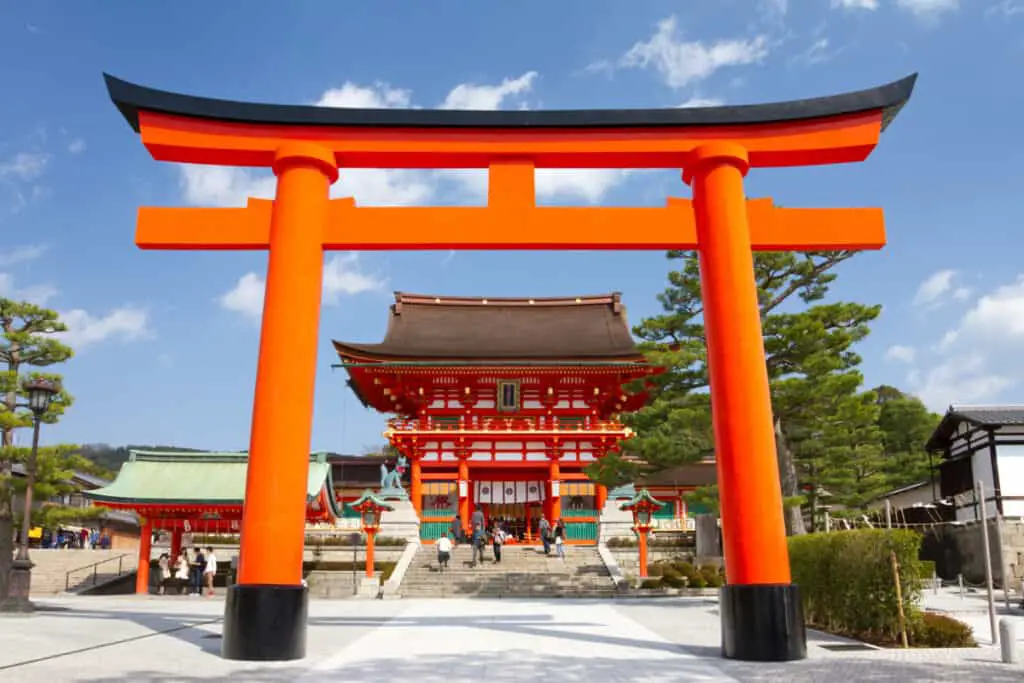
Most international tourists come visit Fushimi Inari Shrine to hike the mountain paths, as the shrine structures are magnificent. The Romon Gate, a gift from the legendary leader Toyotomi Hideyoshi in 1589, stands at the shrine’s entrance.
Visit Yokai Street to Find Traditional Japanese Ghosts
Nature worship and animism, the concept that both alive and inanimate objects are imbued with spirits, are the foundations of Japan’s native Shinto religion. As a result, Japanese mythology has a variety of strange yokai or supernatural beings, such as an umbrella monsters.
Take a trip through Kyoto’s Yokai Street, a shopping street filled with handcrafted yokai creatures manufactured by local shopkeepers, if you’re interested in ghouls and ghosts. Throughout the year, the neighborhood holds yokai-themed events.
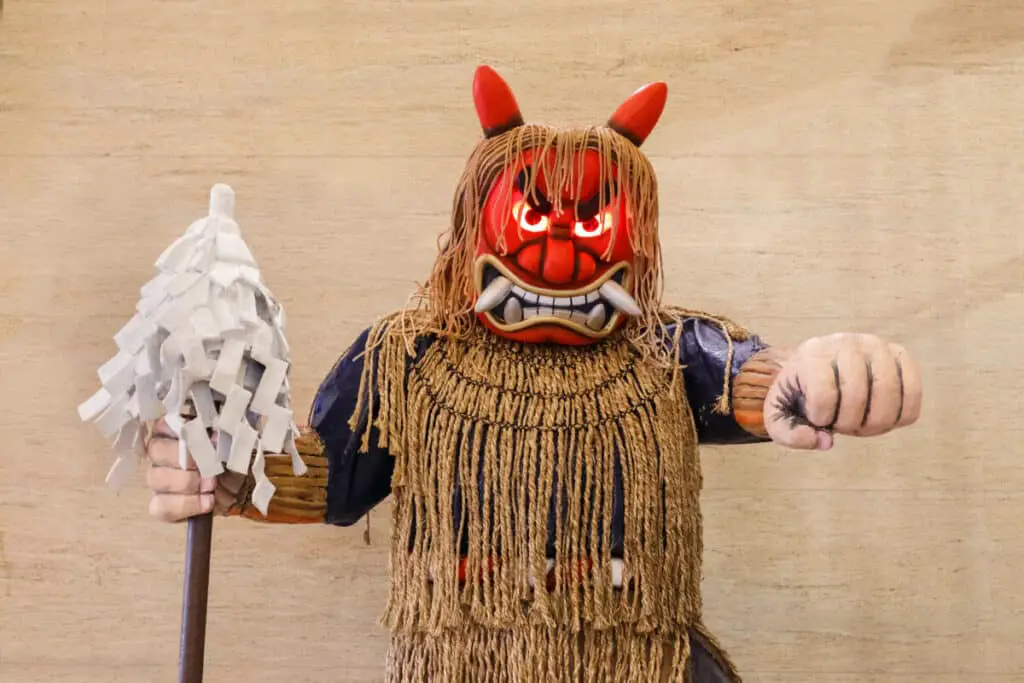
Yokai sculptures can be seen in abundance on Yokai Street. At the neighborhood noodle shop, you can even get black “yokai ramen,” which is colored with squid ink.
A tiny yokai museum is even located on this street. There, you may tour a haunted house, learn about various demons, and even sketch your own.
Eat at Kichi Kichi
Kichi Kichi is a Japanese-style western restaurant known for its Omurice. While not a Kyoto specialty, the omurice or omelet rice at Kyoto restaurant Kichi Kichi became a global hit after uploaded footage of chef Yukimura Motokichi’s trademark cooking technique.

Motokichi chops apart a fluffy omelet balanced atop a pile of rice pilaf with his chef’s knife, spreading the omelet’s wonderfully eggy contents over the rice and finishing it with a thick demi-glace sauce.
While omurice is a simple meal that anybody can prepare at home, Kichi Kichi’s rendition takes it to a whole new level.
Kyoto’s bustling historical thoroughfare, the eatery lies in a quiet, small alley off Kiyamachi-Dori. Along Kiyamachi-Dori, look for a red sign directing you to the alley. Kichi Kichi has been featured on TV shows, periodicals, and YouTube. Reservations are notoriously tough to come by at this restaurant.
Visit Tenryuji Temple
Tenryuji is the most renowned temple in Kyoto’s west Arashiyama district. Tenryuji is considered the chief temple of the Tenryu sect of Rinzai Zen Buddhism, making it the first of Kyoto’s top five Zen temples, including Nanzenji, Shokoku-Ji, Tofukuji, and Kenninji.
Built-in 1339 to satisfy the emperor’s spirit, the garden has had to be rebuilt due to different tragedies, yet it has endured and remains a stunning example of Zen design. The vista is excellent for a afternoon of contemplation, and visiting the grounds is a soothing excursion into nature, with a central pond and the Arashiyama mountains making an exquisite backdrop.
Tenryuji Temple Official Website
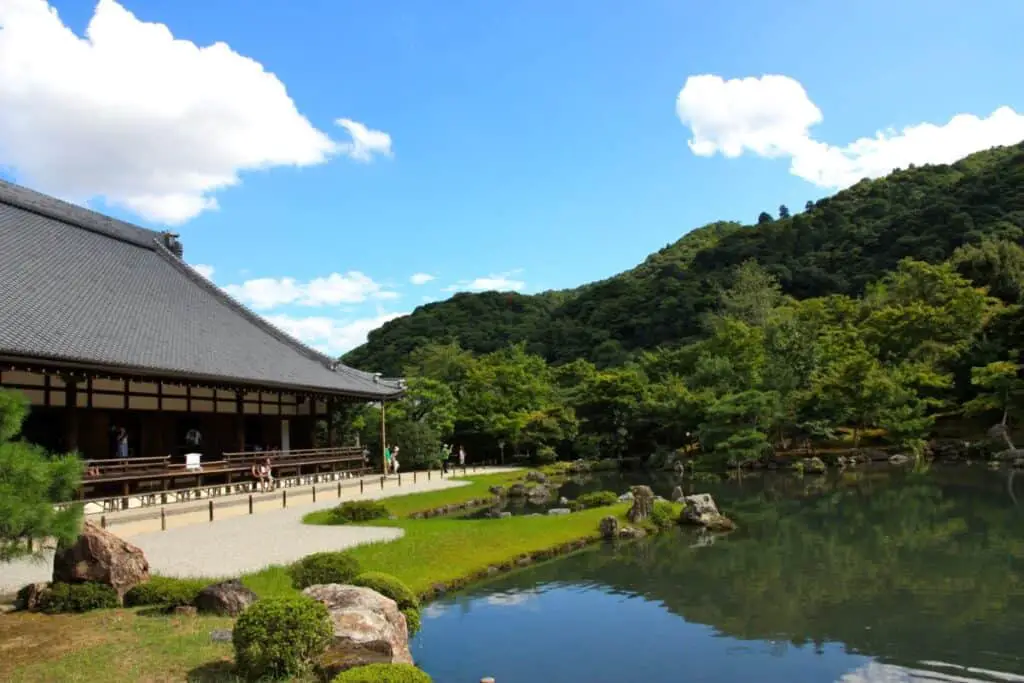
Tenryuji Temple was a remarkable success, eventually spawning 150 sub-temples.
On the other hand, the temple was devastated by fire five times in the 14th and 15th centuries, then again during the Onin War in 1815, and several temple buildings and artifacts were destroyed during the Hamaguri Rebellion in 1864.
Tenryuji, as we know it now, first appeared during the Meiji Period. Tenryuji became a UNESCO World Heritage Site in 1994.
Visit the Arashiyama Bamboo Forest
It’s as if you’ve gone into another universe when you’re surrounded by so much bamboo. Arashiyama’s world is lush and tranquil. Locals say visiting the bamboo grooves when the weather is a bit windy is preferable because the tall bamboo stalks seem dreamy and captivating when they softly move back and forth.
Arashiyama Bamboo Forest Location Via Google Maps
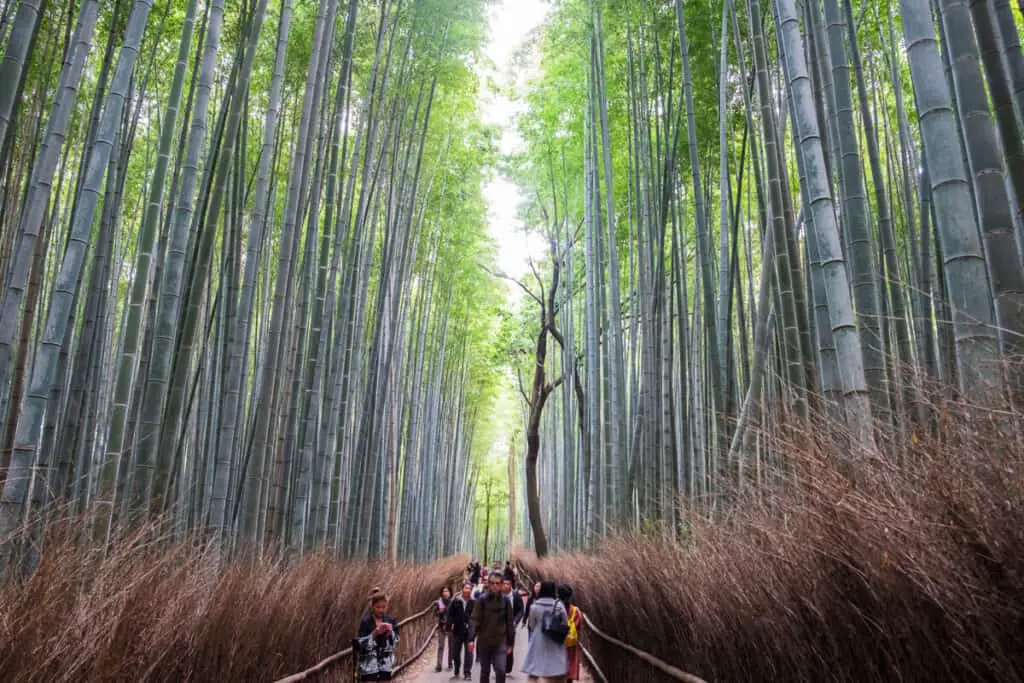
The Arashiyama bamboo grove, located in the Arashiyama mountains, is notable for its abundant and massive bamboo. This beautiful splendor gives a unique insight into Kyoto’s ancient center, making it a popular tourist attraction. Arashiyama is only a short train trip from Kyoto Station, and the voyage is included in the Japan Rail Pass.
View Geisha’s in Gion
The most well-known of Kyoto’s five flower villages, Gion is a popular destination for geisha sightings. Gion is home to a plethora of antique teahouses and restaurants that feature high-end entertainment events.
Many won’t allow new clients, so if you want to see the mysterious geisha, you’ll have to stick to street-watching. Gion is a charming location to explore day or night, with a classic feel and popular with couples for a promenade after dinner, with or without the elusive figures.
Gion District Location Via Google Maps
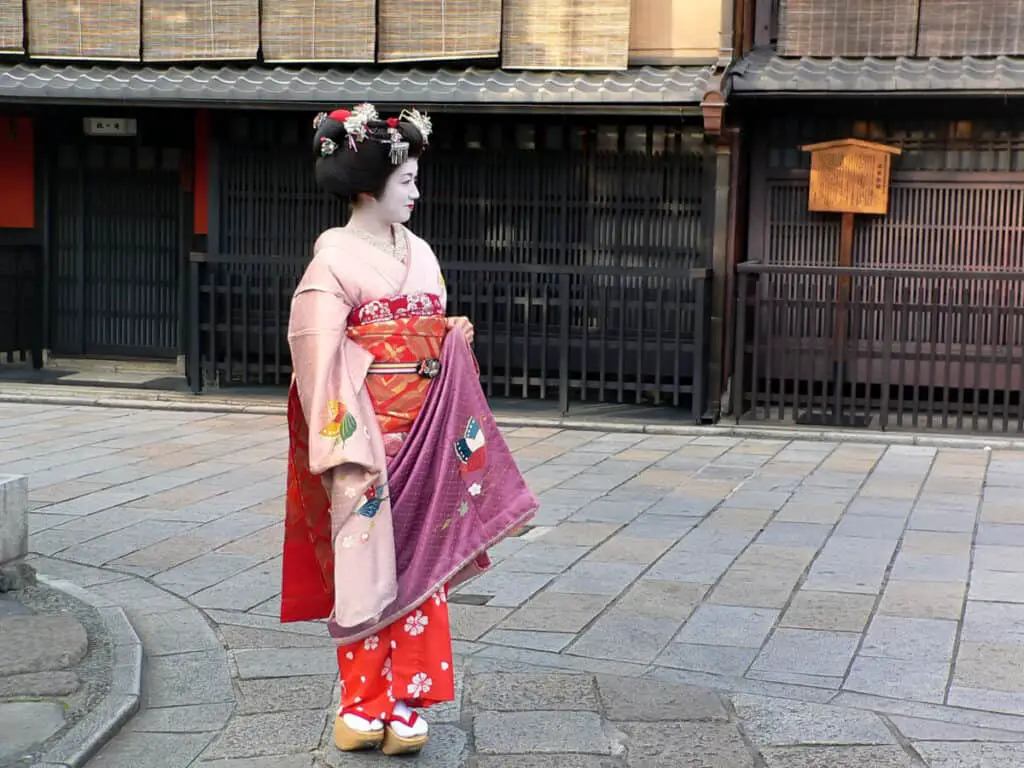
In Gion, there is a public theatre named Gion Corner, which is located in the center of Hanami Lane. This little theatre hosts traditional Japanese performing arts every night. If you purchase a ticket, you will also get the opportunity to watch an actual geisha.
Visit the Yasaka Shrine
Yasaka Shrine, located just across the Kamo River and the welcome entry to the Higashiyama District, is well known for weddings and hanami events in the city.
Yasaka Shrine is well-known for its annual summer celebration, the Gion Matsuri, which takes place in July. The Gion Matsuri, Japan’s most famous event, stretches back over a thousand years and comprises a parade with gigantic floats and hundreds of people.
Yasaka Shrine Official Website
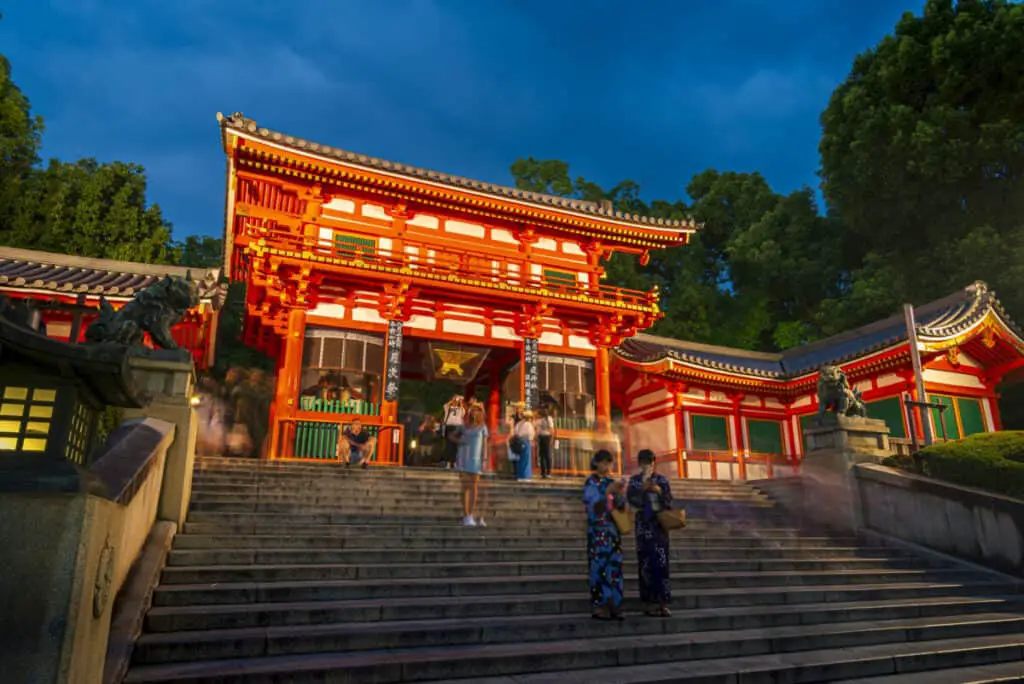
The temple is especially popular during the cherry blossom season, which begins in early April. Matsuyama Park, which surrounds the shrine and incorporates Shoren-in Temple, a location with historic links to the Japanese Imperial Family dating back to the 12th century, is renowned for cherry-blossom viewing.
Visit Kiyomizudera
Kiyomizudera is a gem of the city and the ideal place to complete a tour through Higashiyama, thanks to its wooden veranda with breathtaking views of Kyoto.
It was established near the Otowa Waterfall and is currently part of the Kita Hosse sect of Japanese Buddhism. Its name means “Pure Water Temple.”
Kiyomizudera Temple Official Website
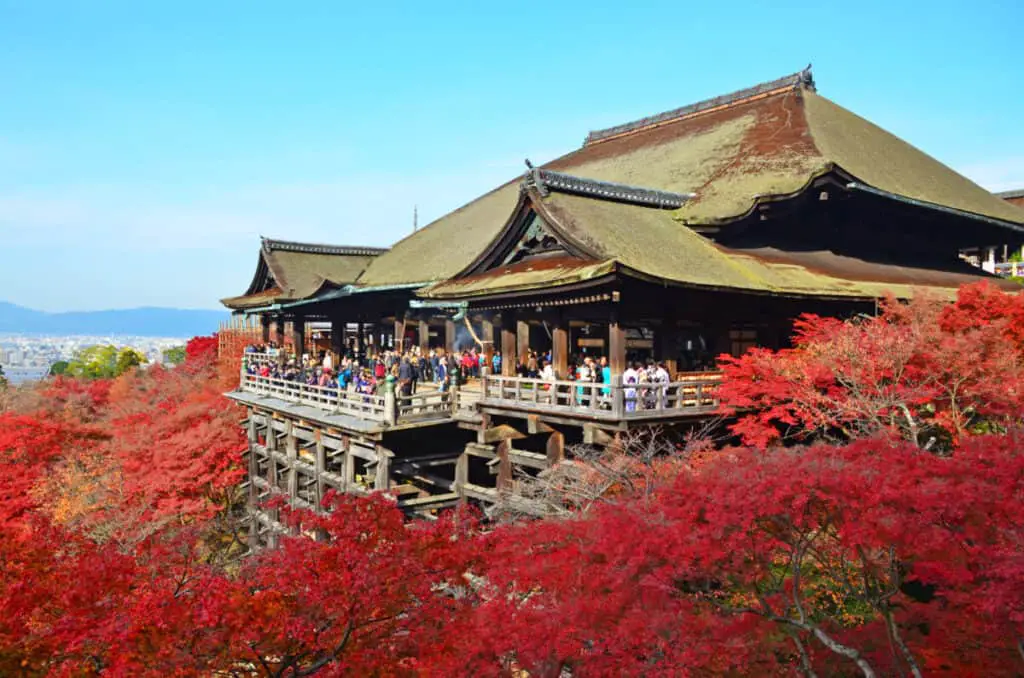
You can pray for love at Jishu Shrine behind the main hall and select between longevity, educational fortune, or love luck by drinking from one of the waterfall’s three streams, in addition to savoring the scenery from and of the temple.

